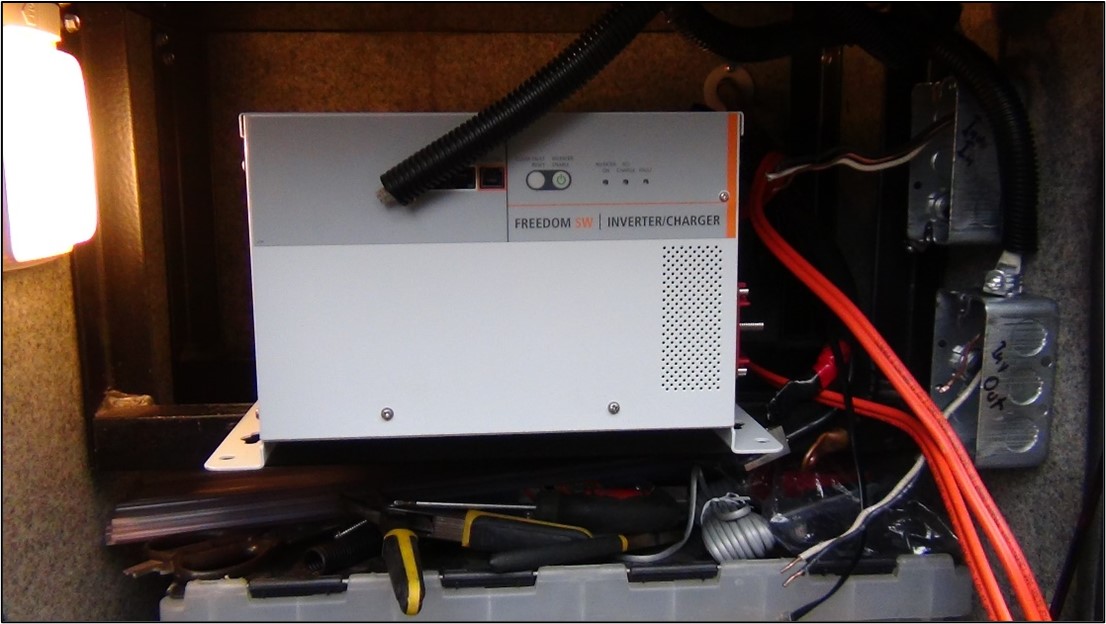By Steve Froese, F276276
The electrical system in your RV is likely one of those out-of-sight, out-of-mind subjects. Some owners don’t have much understanding of how the electrical system in an RV works, so I offer this overview.
The electrical system consists of three main components: converter or inverter/charger, power distribution, and battery charging. For RVs with converters, the three components may be combined into a single assembly. In others, they will be separate. Let’s break down the components.
Converter
When the RV is plugged into shore power or running off a generator, 120-volt-AC power is supplied directly to the breaker panel and power converter. The converter transforms some of this incoming AC voltage to 12-volt-DC power. This DC voltage is used to power the low-voltage devices throughout the RV, such as lights, control boards, fans, furnace motors, etc. Therefore, when your RV is running off converter power, the batteries are not being drained, as the 12-volt DC power is being supplied by the converter rather than the batteries.
Or
Inverter/Charger
An inverter is the opposite of a converter, as it changes 12-volt-DC power to 120-volt-AC power. In other words, it takes an input of 12-volt-DC power from the battery bank and inverts it into 120-volt-AC power at the output. This largely eliminates the need for shore or generator power, although large loads such as air conditioners can’t effectively run off inverter power.
When an RV is connected to shore power or to a generator, an inverter/charger replaces a converter by running in reverse. It takes the 120-volt-AC power from the outside source and provides 12-volt-DC output that is used for battery charging and RV house power.
It is important to note that inverters that do not provide a charging function may coexist with an RV converter. In that case, the inverter usually is wired with its own branch circuits separate from the converter.
Power Distribution
When an RV is connected to shore power or a generator, the unit’s electrical system is protected by a main breaker. The output of this breaker feeds a buss bar within the breaker panel. In the case of a 50-amp RV, each 50-amp breaker is connected to its own buss bar. Each individual circuit (referred to as a “branch circuit”) is protected by a circuit breaker that feeds off one of these buss bars. For instance, the refrigerator, converter, each air conditioner, microwave, and receptacles represent branch circuits. In addition, the 12-volt-DC branch circuits are protected by fuses or breakers.
Battery Charging
Along with providing power to the RV, the converter or inverter/charger provides battery charging when the RV is plugged into a shore power source or on generator power.
Solar power cells are growing in popularity. These, too, serve to keep your batteries charged under the right solar energy and low power consumption conditions.
While this article summarizes only the fundamentals, I hope it has improved your understanding of how your RV electrical system functions. More in-depth discussion can be found in other FMCA articles.

